Chromosomes with two intact axial cores are induced by G2 checkpoint override: evidence that DNA decatenation is not required to template the chromosome structure
- PMID: 9008701
- PMCID: PMC2132461
- DOI: 10.1083/jcb.136.1.29
Chromosomes with two intact axial cores are induced by G2 checkpoint override: evidence that DNA decatenation is not required to template the chromosome structure
Abstract
Here we report that DNA decatenation is not a physical requirement for the formation of mammalian chromosomes containing a two-armed chromosome scaffold. 2-aminopurine override of G2 arrest imposed by VM-26 or ICRF-193, which inhibit topoisomerase II (topo II)-dependent DNA decatenation, results in the activation of p34cdc2 kinase and entry into mitosis. After override of a VM-26-dependent checkpoint, morphologically normal compact chromosomes form with paired axial cores containing topo II and ScII. Despite its capacity to form chromosomes of normal appearance, the chromatin remains covalently complexed with topo II at continuous levels during G2 arrest with VM-26. Override of an ICRF-193 block, which inhibits topo II-dependent decatenation at an earlier step than VM-26, also generates chromosomes with two distinct, but elongated, parallel arms containing topo II and ScII. These data demonstrate that DNA decatenation is required to pass a G2 checkpoint, but not to restructure chromatin for chromosome formation. We propose that the chromosome core structure is templated during interphase, before DNA decatenation, and that condensation of the two-armed chromosome scaffold can therefore occur independently of the formation of two intact and separate DNA helices.
Figures
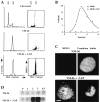


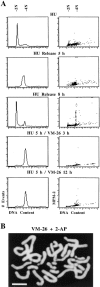
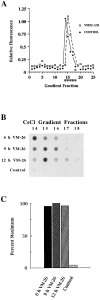
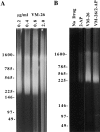
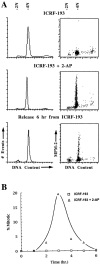
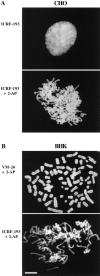

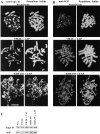

Similar articles
-
Revised genetic requirements for the decatenation G2 checkpoint: the role of ATM.Cell Cycle. 2010 Apr 15;9(8):1617-28. doi: 10.4161/cc.9.8.11470. Epub 2010 Apr 15. Cell Cycle. 2010. PMID: 20372057 Free PMC article.
-
Topoisomerase II inhibitors affect entry into mitosis and chromosome condensation in BHK cells.Cell Growth Differ. 1996 Jan;7(1):83-90. Cell Growth Differ. 1996. PMID: 8788036
-
Ku antigen is required to relieve G2 arrest caused by inhibition of DNA topoisomerase II activity by the bisdioxopiperazine ICRF-193.Oncogene. 2001 Apr 12;20(16):1990-9. doi: 10.1038/sj.onc.1204262. Oncogene. 2001. PMID: 11360183
-
The roles of DNA topoisomerase II during the cell cycle.Prog Cell Cycle Res. 1996;2:229-39. doi: 10.1007/978-1-4615-5873-6_22. Prog Cell Cycle Res. 1996. PMID: 9552399 Review.
-
Cell Cycle-Dependent Control and Roles of DNA Topoisomerase II.Genes (Basel). 2019 Oct 30;10(11):859. doi: 10.3390/genes10110859. Genes (Basel). 2019. PMID: 31671531 Free PMC article. Review.
Cited by
-
The role of topoisomerase II in meiotic chromosome condensation and segregation in Schizosaccharomyces pombe.Mol Biol Cell. 1998 Oct;9(10):2739-50. doi: 10.1091/mbc.9.10.2739. Mol Biol Cell. 1998. PMID: 9763441 Free PMC article.
-
Bloom helicase and DNA topoisomerase IIIalpha are involved in the dissolution of sister chromatids.Mol Cell Biol. 2006 Aug;26(16):6299-307. doi: 10.1128/MCB.00702-06. Mol Cell Biol. 2006. PMID: 16880537 Free PMC article.
-
Sister chromatid resolution: a cohesin releasing network and beyond.Chromosoma. 2010 Oct;119(5):459-67. doi: 10.1007/s00412-010-0271-z. Epub 2010 Mar 30. Chromosoma. 2010. PMID: 20352243 Review.
-
Extracellular signal-regulated kinase activates topoisomerase IIalpha through a mechanism independent of phosphorylation.Mol Cell Biol. 1999 May;19(5):3551-60. doi: 10.1128/MCB.19.5.3551. Mol Cell Biol. 1999. PMID: 10207078 Free PMC article.
-
Human topoisomerase IIalpha: targeting to subchromosomal sites of activity during interphase and mitosis.Mol Biol Cell. 2004 May;15(5):2388-400. doi: 10.1091/mbc.e03-08-0558. Epub 2004 Feb 20. Mol Biol Cell. 2004. PMID: 14978217 Free PMC article.
References
Publication types
MeSH terms
Substances
LinkOut - more resources
Full Text Sources
Miscellaneous

